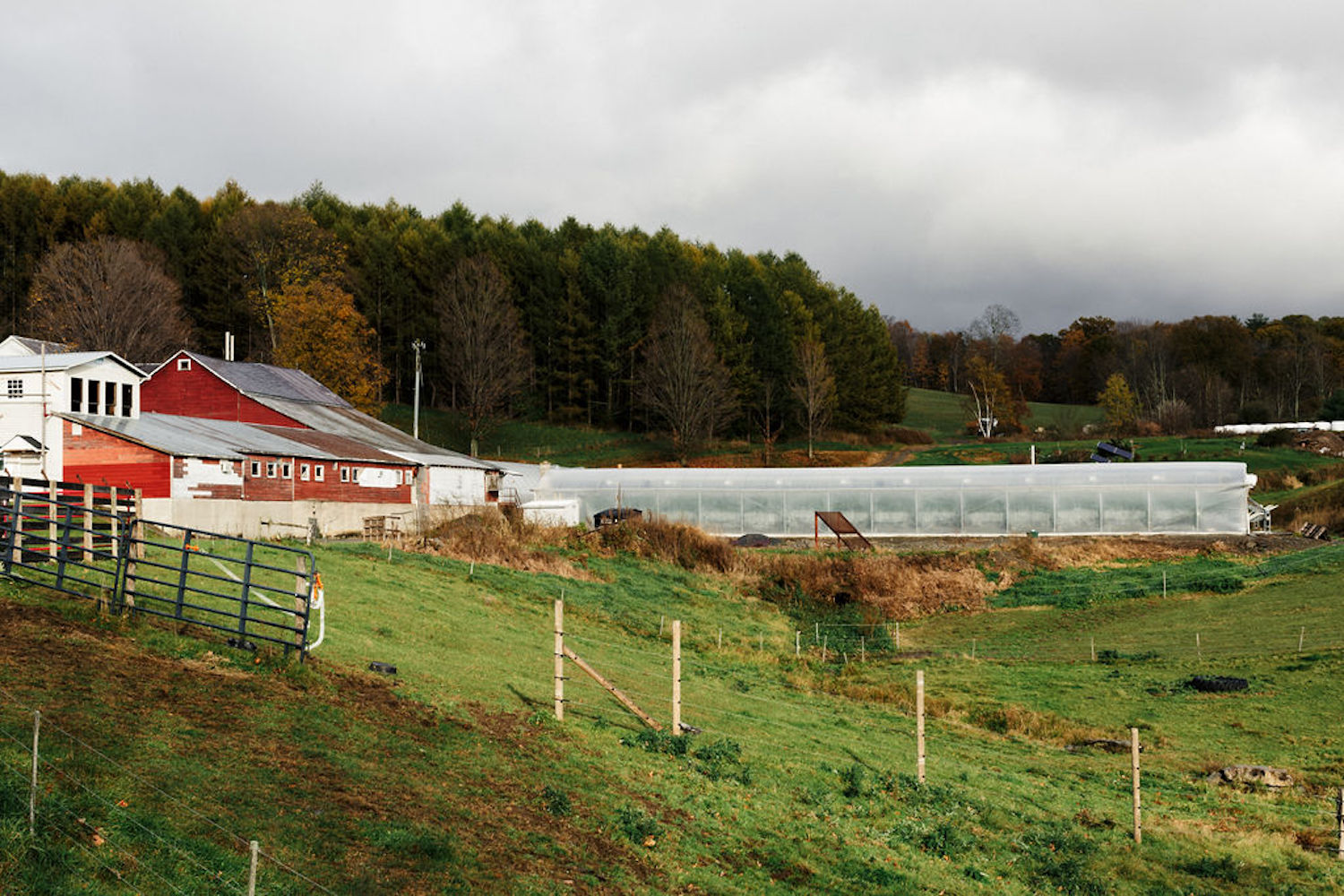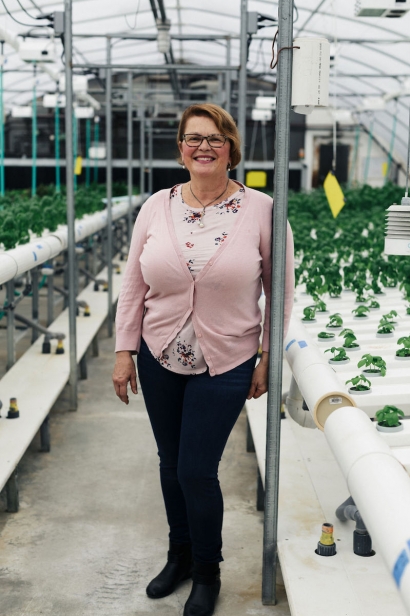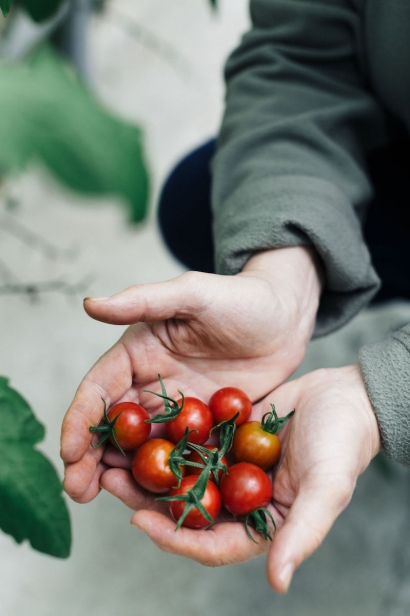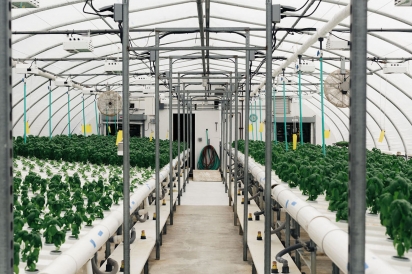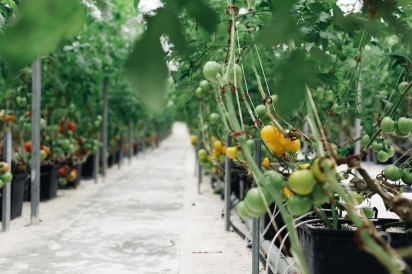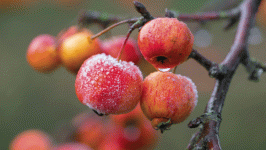Hydroponic Produce Brings Local Tomatoes to New York in February
What farmer wants to grapple head on with the global implications of food security and climate change? It’s like asking an editor to take a stand on the problems of literacy in third-world countries. (I mean, everyone wants people to eat and read, right?)
But increasingly, that’s just what’s being done. In the media, in wonky academic studies and in environmentally focused educational institutes like Cornucopia, cartoonish depictions of farmers are emerging, casting hydroponic farmers as either the saviors of a hungry planet gripped in the throes of natural disasters brought on by climate change and increasingly small plots of land available for agricultural production, or as money-grubbing baddies out to put classic family farms out of business.
First, let’s define our terms. Hydroponically grown fruits and vegetables can be nurtured in sand, gravel or liquid, with the addition of nutrients but no soil. They can be grown with or without synthetic pesticides. Advocates say that hydroponically grown produce requires less space, water and energy to grow. Critics says that the absence of soil belies the definition of farming, which is intrinsically tied to the cultivation of the dirt under our feet and the delicate dance it performs with other crawling, squirming, buzzing and running beings.
Hydroponic farming may have seemed to emerge from the same millennial ether that produced Instagram and Gangnam Style, but it has been around at least since the early 17th century. (The English philosopher and scientist Francis Bacon wrote about it in A Natural History, published a year after his death in 1627).
For Phyllis Underwood, a dairy-turned-hydroponic farmer in Shushan, the fuss is overblown. Especially considering that she and her husband Wayne grew up in Washington County and are as entrenched in the region and invested in its future as a couple could be. They both hail from families of 11 children. They raised two together right here on the farm, who in turn produced six grandchildren (one pair of twins was still en route at press time), all of whom live in the area and come to play on the professional-level playground on their farm.
Their priorities—family, community, connection—are clear as day when you step inside of their home. On the kitchen table, Phyllis has begun preparations for that evening’s feast. (Around 30 family members are coming by for a casual dinner). Produce and herbs plucked from her greenhouses sit to the right of the sink. Inside their wellstocked fridge, beef from the cow they raise annually for slaughter marinates. A still life painting of pumpkins and squash hangs on the wall. Cartoon-festooned toothbrushes for their grandchildren rest in a glass in the bathroom. An older, sedate Labrador retriever and a frisky, curious hound nose around.
“We actually got the idea for a hydroponic farm at Disneyworld of all places,” says Phyllis, recalling how she and Wayne decided to found Shushan Valley Hydro Farm. “There was a display on hydroponics in Epcot, and Wayne and I were fascinated. When I got home and started making inquiries, the salesman for the greenhouses talked us out of it. He was convinced we could make more money growing flowers, so we did that for three or four years. But then we—well, Wayne, really, because he’s more of a risk taker—decided to take the plunge.”
The Underwoods knew that farming inherently carried risk. Wayne grew up in farming, and when they married in 1974, he was working full-time on his uncle’s dairy farm. In 1980, Wayne began his own dairy farm, with Phyllis as his business partner and co-manager. Phyllis had a bachelor’s degree in business, so she handled that end.
“Wayne never had formal training in electrical, plumbing, heating, mechanics or excavation, but I’ve always been amazed by how he can successfully take them on,” Phyllis says. “He has an engineer’s brain. He can build out and repair anything, including our electrical and drainage systems.” They thrived, and after trying the business out and renting land, they purchased 191 acres in Shushan in 1986. They had 140 cows, mostly Holsteins, with a smattering of Jerseys.
“The Jerseys don’t produce as much milk, but what they do produce is higher in butterfat,” Phyllis explains. “It all gets mixed in the same tank. The big milk companies pay more for milk that’s higher in butterfat, so we were always aiming for the right mix.”
But, like many small-to-medium-size New York dairy farmers in the 1980s, who saw production increase and prices on the market plummet, the Underwoods couldn’t compete with the conglomerates.
“We couldn’t make it work anymore by the late ’80s,” she says. “I went back to my business roots and did management consulting, and my husband was a district rep selling farm equipment, then later [worked] at an oil company.”
But looking outside their window at the rolling Washington County hills, they missed their palpable connection to their land, to things that grow. Driving through Shushan, the main attraction to outsiders seems to be the Shushan Covered Bridge, one of 29 such covered bridges in the state. There’s so much and nothing to look at, depending on your perspective. The population of the entire county is just over 63,000. The northern end of the county is part of the Adirondacks; Shushan proper is four miles west of Vermont. The legendary Batten Kill sluices through, carrying marvelous fly-fishing and rafting opportunities. But mostly, it’s “just” rich, fertile land, home to, at last count, 851 farms with 189,391 acres (or about 223 acres per farm).
“We both always wanted to go back to farming, and greenhouses seemed like the best way for us to produce food, and manage risk,” she says.
So, in 1993, they tiptoed back into farming with two greenhouses dedicated to flowers. By 1996, Phyllis and Wayne decided to take their chances on produce. They started with two bays of tomatoes.
Phyllis and Wayne’s Disney fantasy proved prescient, and their business increased stratospherically. Now they have six greenhouses in total. They grow tomatoes (cherry, heirloom, cluster, beefsteak), cucumbers (Asian and diva), basil (lemon, purple, ai, regular), cilantro, thyme, dill, mint, oregano, rosemary, lettuce and arugula. Phyllis has her eyes set on a new veggie: a specialty eggplant or squash, but she’s still in the dream phase.
It’s a closed system, sealed from germs and pesticides. They use organic practices while growing all of their produce, but they’re not certified (she cites the usual reason we hear when asking farmers about this: It’s cost prohibitive).
“The great thing about a closed system, is that you can control the environment completely,” she says, puttering between tomato rows, stopping to touch a ruby here, fret over a micro-blemish on a leaf there. “So even if some of our farming neighbors are using chemicals to treat their land, we don’t have to worry about it infecting our food.”
Phyllis does worry, though. (And she seems to do it for both of them: As Phyllis monitors the beds, Wayne blasts classical music, laughs at their hound and happily deploys a variety of power tools on one of his many Mr. Fix It endeavors.)
Is hydroponic farming the best and only way to feed an energy-challenged, water-parched world of hungry people? Probably not. As Phyllis herself says, their farm is best thought of as “one of a complex network of food sources. There’s no ‘one size ts all’ solution to anything.”
But is it the best and only way to get locally grown tomatoes in the Capital District in February? Yep.
Hydroponic & Organic Farming by the Numbers
Eliminating or reducing the cross-country (or cross-continental) transport of fresh produce upstate in the dead of winter alone would be a boon for the environment, but consider these numbers to see how it all adds up:
Sales of fresh organic produce reached almost $5 billion in 2017, up 8% over 2016, according to a study by the Organic Produce Network and Nielsen.
By 2020, General Mills plans to convert 34,000 growing acres in South Dakota to organic. (The wheat grown there is destined for its Annie’s Mac & Cheese.)
The United Nation’s Food and Agriculture Organization says there needs to be a 50% increase in global agriculture production, a challenge it warns, in the face of climate change and water shortages.
Hydroponically produced lettuce was found to be 11 times greater in terms of yield per area than conventionally produced lettuce, according to a 2015 study published in the International Journal of Research and Public Health.
The same study found that water consumption was 13 times lower in hydroponically produced lettuce versus conventional.
However, energy consumption in the hydroponic production of lettuce was found to be much higher; 82 times more energy per kilogram produced was used in hydroponic versus conventional. (Artificial lighting, circulating pumps and heating and cooling systems were the main culprits).


